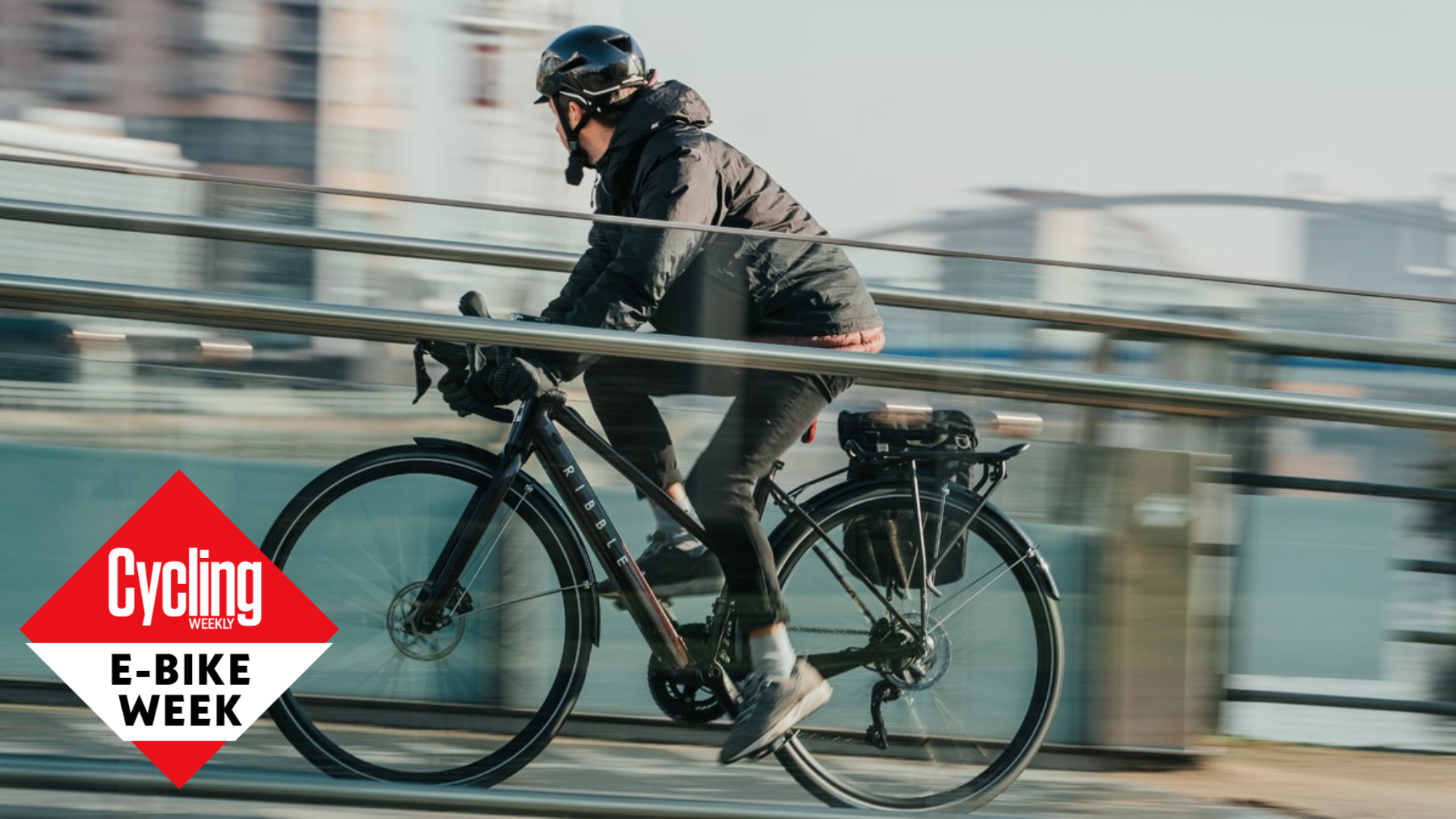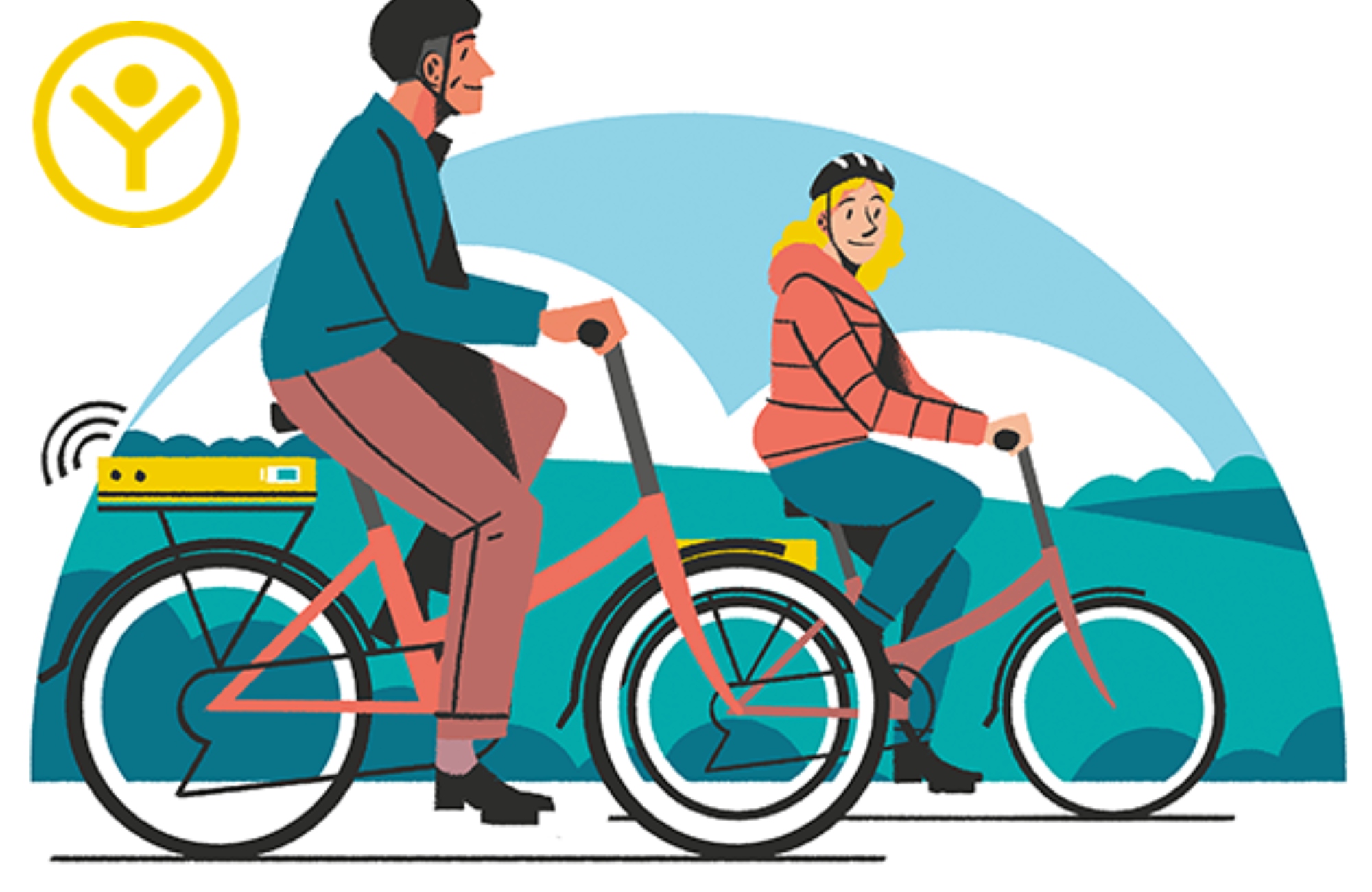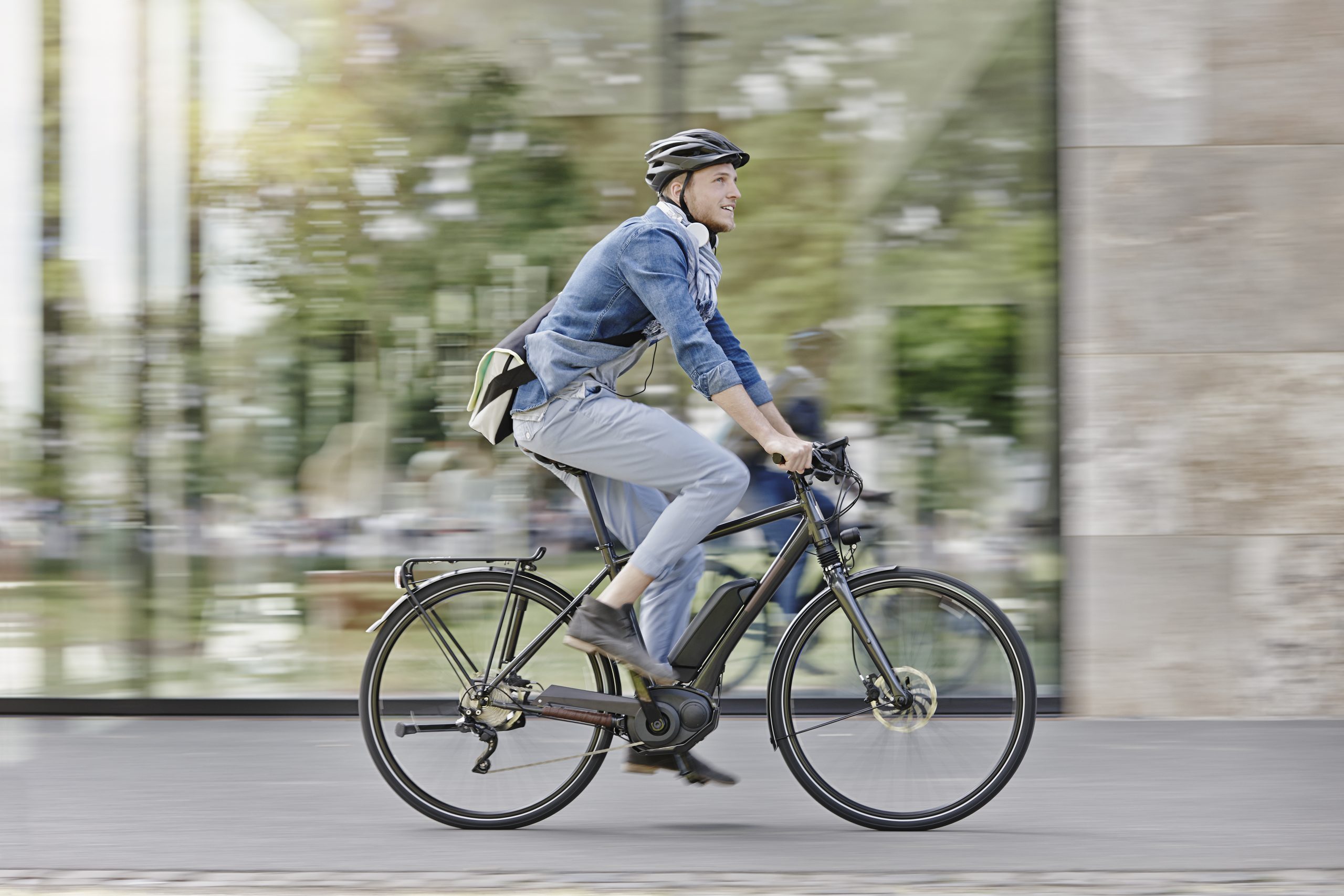Best e-bike insurance and everything you need to know
We answer all your questions on electric bike insurance and help you find the best protection


In terms of bike revolutions, the invention of pedal-assisted power is probably one of the biggest in recent years. If you are thinking of investing, or perhaps already have, in one of the best electric bikes or even made a lifestyle change and welcomed one of the best electric cargo bikes to your family, you'll know that they bring immense joy. However, that new found happiness does come at a premium price, meaning that you will want to ensure that it's protected with the best e-bike insurance should it be damaged or stolen.
We look at the best e-bike insurance brands, the different types of cover they offer, along with answering all the questions you might have around insurance, the law and your electric bike.
Best e-bike insurance
In this guide we aim to provide you with lots of advice on how to narrow down your options and find the best e-bike insurance for you.
Like the best bicycle insurance, in the main you have two insurance options. Either a e-bike specific policy, or tacking it on to your home insurance. There are pros and cons to both options which we cover a little further down this guide.
This guide just covers bicycle specific insurance options, but make sure to read all the T's and C's in detail before you sign up to make sure that your exact situation and bike is covered by the policy.

An e-bike cycling tour in Kent (Photo by Andrew Aitchison / Getty Images)
Best e-bike insurance

LAKA Bicycle Insurance
Specifications
Reasons to buy
Reasons to avoid
LAKA bicycle insurance is considered the gold standard by most cyclists due to it's unique approach to cover and protection provision.
LAKA acts as a collective, where all insurance costs and claims are spread amongst subscribers, therefore spreading the cost across all users. This means that your monthly insurance cost is flexible, and some months less, up to a set price cap.
The latest race content, interviews, features, reviews and expert buying guides, direct to your inbox!
The biggest perk for LAKA e-bike insurance is that not only does it cover your bike and you, but also your accessories, with the obvious inclusion of your e-bike battery.
Exactly what is covered and how much you pay will depend on what policy level you opt for, and this will determine the rough monthly cost. This can seem a little expensive when comparing prices to other brands, but it's worth remembering that there is no excess to pay and that most claims, according to the brand, are settled within one day.
Other perks of LAKA e-bike insurance (depending on what policy you choose) include financial support for injury assessment and support even if you weren't on the bike, and up to 120 days worldwide, and for sportive events. LAKA even provide emergency cash to help with dealing with the outcomes an accident or theft.
LAKA are also one of the few brands that offer e-bike conversion cover too, although ensure you check the policy to make sure your specification is legal and on the list.

Yellow Jersey e-bike insurance
Specifications
Reasons to buy
Reasons to avoid
Yellow Jersey is one of the best known bike insurers in the UK due to being one of the first bicycle specific insurance companies that covered riders for races and events.
The brand now offers a stripped back 'Essentials' insurance cover, and has added a specific e-bike option which looks ideal for no-performance riders and their bikes.
The brand recognise that most families will have more than one bike, so have a 60 percent discount option to add more than one members' bike to the policy, with another 30 percent on top of that specifically for e-bikes as Yellow Jersey say that owners are more careful with their bikes, so reward accordingly.
The 10 percent excess fee doesn't feel excessive, and, this probably helps bring most premiums a little less compared to LAKA.
If you are travelling with your e-bike you will need to add in the option, so worth inquiring as to the T's and C's and potential costs if you are thinking of doing so, as LAKA includes as standard.
It's worth knowing that, like most insurance brands, once you take out your policy, any claim is dealt with by a third-party, who might not be as bike savvy as the person you signed up with, which could make claiming frustrating.
The biggest downsides are the lack of roadside recovery, especially if your electric bike is heavy and won't fit in a taxi or car. The other item to watch for is not being covered for post-sale electric bike conversions.

Bikmo e-bike insurance
Specifications
Reasons to buy
Reasons to avoid
Bikmo is probably the best e-bike insurance for anyone with limited retail space to store their bike indoors. The brand's 27/7 'cycle hanger' cover means that even if you have to leave your bike in shared storage, as long as it's locked with approved locks in the approved way, you will be covered in the event of theft or damage to your bike.
Having worldwide cover as standard will also be a big lure for frequent travellers with their e-bikes. You will still need travel insurance for all eventualities off the bike, it's good to know that at least your pride and joy is automatically covered.
If you are hoping to benefit from the extensive medical cover from Bikmo, you will have to ensure you opt for at least the middle policy option, with even public liability not covered on the basic cover.
For cyclists with expensive bikes and e-bikes, you'll be pleased to know that you can insure up to £30,000. However, watch for the accessory cover. At £250, or 10% of the value of your bike for clothes or items such as lights or computers, you might find yourself out of pocket having pay in order to replace.
E-bike specific policies
The best specific e-bike insurance policy will cover you for theft, accidental damage, third party and personal liability.
Many bike specific option will offer like-for-like replacements, or cover the cost of repairing your e-bike if it's damaged in some way.
Some will even provide breakdown cover and protect your cycling accessories, such GPS units, your helmet and kit should they be lost, stolen or damaged in an accident.
If you travel abroad with your bike, then overseas cover will be a priority for you. I've personally found that tacking this on to an existing insurance policy is a more affordable option, rather than paying out blanket cover year round, when in reality I only need it for a week or two.
The best thing about standalone e-bike insurance policies is that the claim can be tailor-made for you and your bike. This means you have exactly the cover you need based on the type of riding you'll be doing on a specific bike.
Some home and contents insurance companies will limit the amount they will insure a bike for, or a max payout if you are wanting cover for more than one bike. This means you could be heavily out of pocket should you unfortunately need to make a claim.
The other really important cover that an e-bike specific insurance would provide is liability insurance, both personal and third party. This is more like a car insurance, whereby if you were to injure yourself or someone else, or their property - you would be protected from expensive pay-outs.
You will need to check the small print of any protection plan, but the best e-bike insurance plans will make what is and isn't included very obvious.
Price comparison websites are great for checking what is and isn't included for your monthly or annual premium, including the all-important excess fee should you need to make a claim.
Home insurance policies
Adding your e-bike to your home insurance policy is a great idea for people who like to use one provider for all their cover.
Most policies will offer basic cover for bikes, but will need notifying that you own an e-bike, and it's likely that the standard cover will barely scratch the surface in terms of paying for a replacement or repairing an e-bike.
The excess is likely to be higher than other household items too, and it's important to weigh up the risk of needing to claim, as this will wipe out any no-claims discounts.
As with even the best e-bike insurance policies, your home insurance will want to ensure that you have made adequate and likely additional measures to secure your bike at home.
It's also vital to check what is and isn't covered for your e-bike, and to make sure you can meet the requirements both home and away. That's assuming of course that it covers you away from home.
If you can tick the boxes for matching your needs at a price you can afford, the final thing to check for is that all-important liability protection.
If it doesn't come as standard, or it isn't an option, then you can look at getting this separately.
Some cycling club memberships, as well as British Cycling and Cycling UK membership in the UK will cover e-bikes. USA Cycling membership in the States will automatically provide liability insurance for riders, but it's not as yet clear if this includes e-bikes.
If you're not a member of any club, you need to ensure you have adequate protection.

Is e-bike insurance a legal requirement?
What is an electric bike?
What does and doesn't count as an e-bike?
Before diving off and purchasing the best e-bike insurance, it's vital to have a full understanding of what an electric bicycle actually is.
You can find all you need to know about electric bikes in our specific page on how to buy an e-bike, which explains terminology, and what to look out for when making a purchase.
For ease of reference, electric bikes are defined in the UK as 'electrically assisted pedal cycles' or EAPCs for short.
It must have pedals to propel it, have a maximum power output of 250 watts, which should not be able to propel the bike when it's travelling more than 15.5mph.
In the US, federal law defines an electric bike as a "low-speed electric bicycle' means a two- or three-wheeled vehicle with fully operable pedals and an electric motor of less than 750 watts (1 horsepower), whose maximum speed on a paved level surface, when powered solely by such a motor while ridden by an operator who weighs 170 pounds, is less than 20 mph.
Do you need insurance for an electric bike?
What are the laws around protecting me and other road users?
For the UK, assuming that your electric bike matches the definition above, there is no legal requirement to purchase insurance, either in terms of protection for the actual e-bike, or liability.
In the US, this is slightly less clear. Federal law distinguishes what is and isn't an electric bike (as noted above), but this only applies to an e-bike's safety and product standards.
Operation of the actual e-bike once it has been purchased is determined on a state by state basis, which means that some states still classify e-bikes with mopeds and other forms of motorised vehicles, restricting where and how they can be used, and with the requirement of licences and registration, and therefore insurance.
There is on-going work to harmonise the use of electric bikes across all states, but best to check in with State Electric Bicycle Laws to see what the laws are where you intend to ride your electric bike.
The most important thing when weighing up investing in the best e-bike insurance is to remember that electric bikes are significantly more expensive than a regular road bike, so the cost of replacing or repairing will hit hard without an insurance payout.
It's also worth remembering that without liability insurance, you are, quite literally liable for any claims made by third parties, or taking forward a claim against one.

How much does e-bike insurance cost?
What's the monthly or yearly premium likely to be?
The biggest question for anyone considering taking out e-bike insurance is the cost. Like any insurance policy, the money involved will vary greatly depending on the cost of the e-bike, the cover provided and the insurer themselves.
But as a guide, quickly popping a £5,000/ $6,200 cargo e-bike into an insurance price comparison website, ticking all the boxes for maximum coverage, came back with quotes around £250/ £314 for the year, or £25/ $30 a month.
There are lots of T's and C's to read through and of course it very much depends on where you live, where the bike will be kept etc. However I was surprised as I had thought it would be a lot more each month.
David George, CEO of specialist cycling insurer Bikmo, says: “Given the average value of an e-bike is significantly higher than that of a regular bike and there is more complexity in the motor, gearbox, battery and electrics, we do recommend insuring e-bikes to protect against financial loss, should the bike be damaged or stolen. After all, you want to keep riding, and we want you to too.”
If you are tacking it on to your house insurance, then you would need to speak to your provider directly for any price changes, and ensure you know exactly what is and isn't included in the insurance policy.
Hannah is Cycling Weekly’s longest-serving tech writer, having started with the magazine back in 2011. She has covered all things technical for both print and digital over multiple seasons representing CW at spring Classics, and Grand Tours and all races in between.
Hannah was a successful road and track racer herself, competing in UCI races all over Europe as well as in China, Pakistan and New Zealand.
For fun, she's ridden LEJOG unaided, a lap of Majorca in a day, won a 24-hour mountain bike race and tackled famous mountain passes in the French Alps, Pyrenees, Dolomites and Himalayas.
She lives just outside the Peak District National Park near Manchester UK with her partner, daughter and a small but beautifully formed bike collection.
